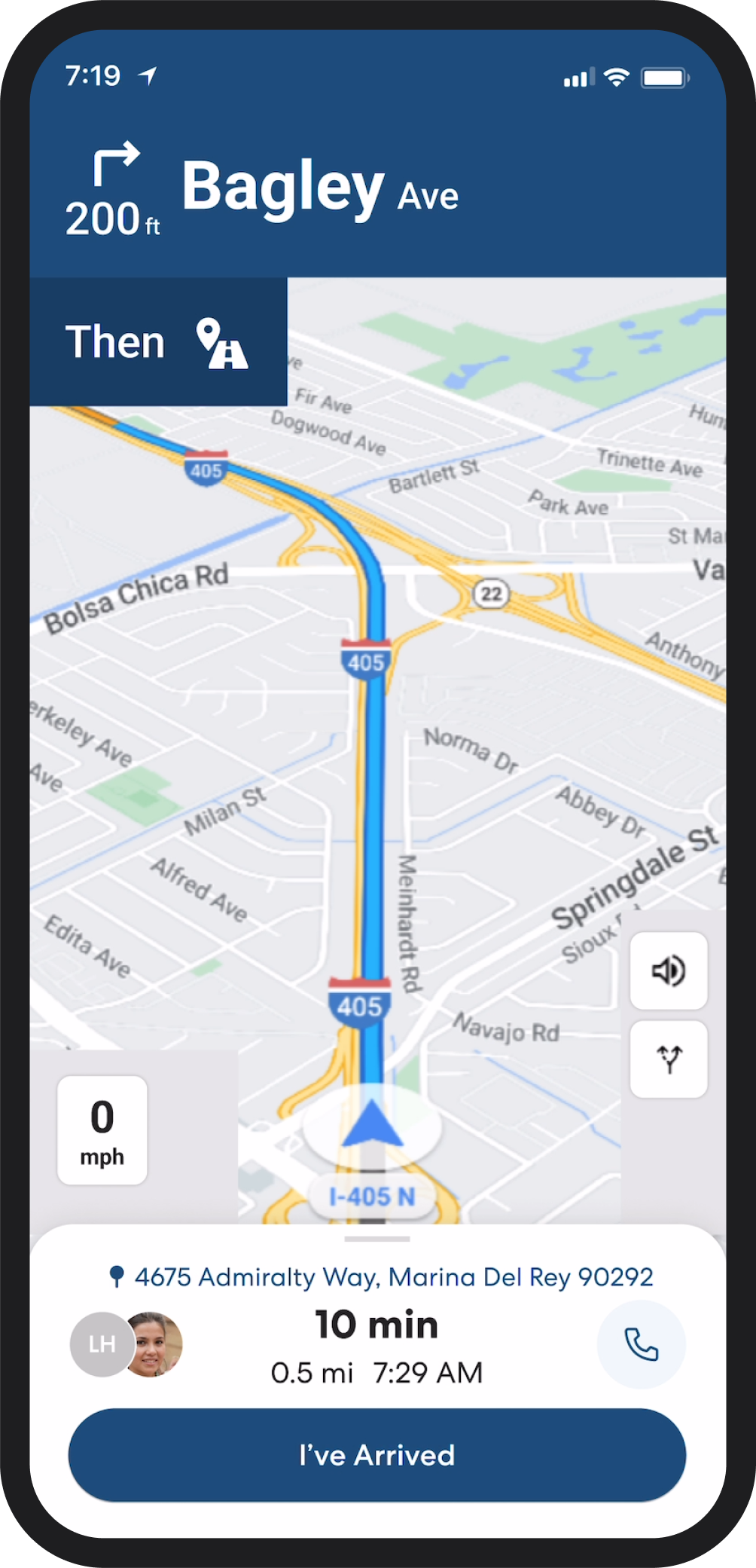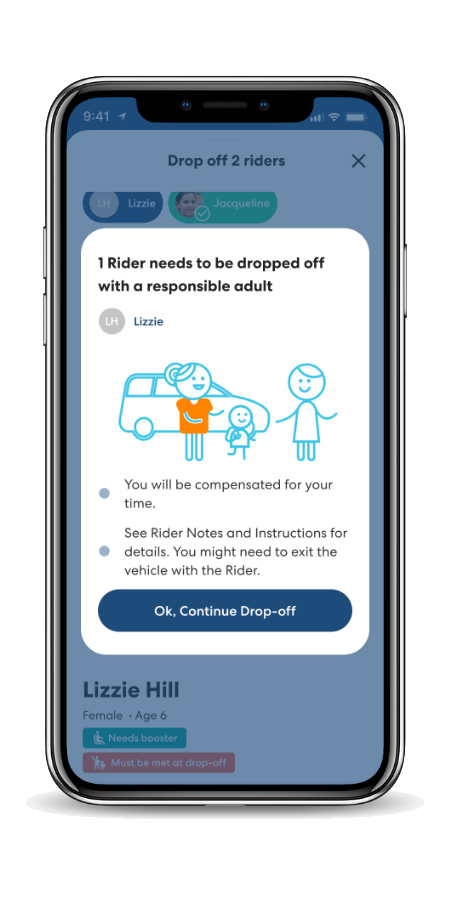Transportation and trauma-informed care
Growing up is a hard thing to do in the world today, and children need help and support wherever they can get it. The sad fact is, many children experience trauma, loss, abuse and neglect in their lives — especially those who live in poverty. These Adverse Childhood Experiences (ACEs) can negatively impact a child’s well-being and health. Long-term, childhood trauma can adversely affect the entire trajectory of a child’s life.
Caregivers, teachers and others who work with children on a regular basis — including HopSkipDrive CareDrivers — can help to offset the far-reaching toll that childhood trauma takes. Utilizing a trauma-informed care approach is one way to do so.
Below, we’ll explore the basics about trauma-informed care, which is focused on building and using knowledge and skills to offer appropriate support to those who need it most. We’ll also review how a trauma-informed care approach relates — and can be applied — to transportation and the important work we do at HopSkipDrive.
Definition and frequency of childhood trauma
Before we dig into specifics about trauma-informed care, let’s start with the basics about childhood trauma. According to the National Child Traumatic Stress Network (NCTSN) — a community of frontline providers, family members, researchers and national partners committed to increasing access to services for children and families who experience or witness traumatic events — childhood trauma occurs “when a child feels intensely threatened by an event he or she is involved in or witnesses.”
This definition of trauma is expanded by the Substance Abuse and Mental Health Services Administration (SAMHSA), which defines the concept of trauma this way: “Individual trauma results from an event, series of events, or set of circumstances that is experienced by an individual as physically or emotionally harmful or life threatening and that has lasting adverse effects on the individual’s functioning and mental, physical, social, emotional or spiritual well-being.”
Although there are many different types (and levels) of trauma that children can be exposed to, the four most common types are physical abuse, sexual abuse, emotional abuse and neglect. Examples of other traumatizing events that children can experience include bullying, medical trauma, community violence, natural disasters, war, domestic violence, terrorism and refugee trauma.
In terms of frequency, childhood trauma is, unfortunately, an all-too-familiar experience for much of the U.S. population. According to Centers for Disease Control and Prevention (CDC) research, more than 60 percent of American adults experienced at least one ACE when they were children. Other recent CDC data indicates that at least 1 in 7 children have experienced child abuse or neglect in the past year.
What is trauma-informed care?
Trauma-informed care is a multilayered approach to providing care and services for those who have experienced traumatizing events. California’s ACEs Aware Initiative — a first-in-the nation effort to screen patients for Adverse Childhood Experiences to help improve and save lives — describes trauma-informed care as a framework that “recognizes and responds to the signs, symptoms, and risks of trauma to better support the needs of those who have experienced ACEs and toxic stress.”
According to SAMHSA — which offers programs, information and training to improve the quality and delivery of behavioral health services across the nation — a trauma-informed approach to care is guided by four assumptions, which are known as the “Four R’s”:
Realization about trauma and how it can affect people and groups
Recognizing the signs of trauma
Responding to trauma with an adequate system
Resisting re-traumatization
Another integral part of a trauma-informed care approach is the following six principles, which were developed by the CDC’s Office of Public Health Preparedness and Response (OPHPR) in collaboration with SAMHSA’s National Center for Trauma-Informed Care (NCTIC):
Safety
Trustworthiness and transparency
Peer support
Collaboration and mutuality
Empowerment and choice
Cultural, historical and gender issues
Used together, these trauma-informed care assumptions and principles can be applied to different organizations and systems to help to foster an environment that acknowledges, understands and respects the traumatic experiences people have gone through. They also serve to maintain an awareness about — and decrease the likelihood of — re-traumatization.
Using a trauma-informed care approach with transportation
There are numerous ways a trauma-informed care approach can be applied to transportation services. This is an especially important consideration when you are transporting children and other vulnerable populations.
Below are a few examples of different ways you can use some of the trauma-informed care assumptions and principles to help make the passengers and riders you are transporting feel respected, comfortable and safe while they are in your care.
Trauma-Informed Care Assumption: Recognizing the signs of trauma
Behaviors that develop as a result of trauma can be confusing and difficult to comprehend in the moment. In essence, they are survival tactics that evolve due to intense psychological stress in a hostile environment. It’s crucial to remember that these reactions are involuntary and can be triggered by anything.
These behaviors — which include the fight, flight or freeze responses — can also occur in non-threatening environments as a method of coping with anxiety. They can show up in many different forms, such as panic, confusion, suspiciousness or a lack of self-care.
Trauma-Informed Care Assumption: Realization about trauma
If you experience challenging behaviors during transport, try to remember that the behavior may be the result of trauma. Then make an effort to practice empathy. When considering the situation and conduct, remind yourself that you don’t know what your rider has experienced in their life. Reframe your perspective by thinking “What happened to you?” rather than “What’s wrong with you?”
Trauma-Informed Care Principle: Safety
When it is your job to get a person from one place to another safely and reliably, following all relevant transportation safety processes and procedures should always be your number-one priority. Doing so will make it clear that you abide by the rules, and you expect everyone to do the same.
Another easy way to create a safe space in your vehicle is to make it a point to always remain calm, even in stressful situations. Your steady presence will serve to make the people you transport feel like you are responsible, dependable and someone they can count on.
Trauma-Informed Care Principle: Trustworthiness and transparency
Maintaining a consistent, candid and friendly demeanor during every ride will help to establish a sense of trust with your riders. This, in turn, will enable them to relax and feel comfortable with you.
Open, respectful communication also builds trust, so be sure to think about the language and tone of voice you use when communicating.
Trauma-Informed Care Principle: Empowerment and choice
As any parent or caregiver knows, setting limits creates clear boundaries — which helps children feel safe. When it comes to transportation, setting limits in your vehicle is appropriate, as long as you do so respectfully.
For example, if you have a rider who is refusing to put on a seatbelt, try talking calmly about the issue at hand rather than engaging in an argument. This will enable the rider to feel like they have some level of control over the situation while simultaneously giving them a chance for their voice to be heard.
You might try saying something like: “If you don’t put on your seatbelt, I won’t be able to start the car and get you home safely. What would you like to do?”
Trauma-Informed Care Principle: Cultural, historical and gender issues
To help ensure you are not operating from a place of unconscious bias, be mindful of how you speak to — and address — passengers and riders. Also, be sure to think carefully about the questions you ask to avoid any unintentional triggers.
It’s crucial to steer clear of making any assumptions about the people you are transporting and/or their lives. This is especially relevant when it comes to making comments or asking questions about any situations or holidays that may involve family (Mother’s Day, Father’s Day, Thanksgiving, etc.).
Trauma-informed care and HopSkipDrive
Many of the riders who rely on HopSkipDrive are students who are in foster care, students facing homelessness, or students with special needs or disabilities. In addition, HopSkipDrive arranges rides for adults with disabilities and senior citizens who no longer drive.
Safety is at the forefront of everything we do, which is one reason why five years of caregiving experience is required for CareDrivers to gain access to the HopSkipDrive platform. Relevant experience includes such things as being a parent, teacher, social worker, nurse, nanny, counselor, babysitter or a primary caregiver for a family member.
This caregiving requirement helps to ensure that CareDrivers are empathetic and understanding in nature, and have a significant amount of experience working with different types of populations — such as those who have experienced trauma.
In addition, as part of HopSkipDrive’s CareDriver onboarding process, we provide information and resources about trauma to ensure that CareDrivers can understand, identify and manage any trauma-related behaviors they may encounter.


